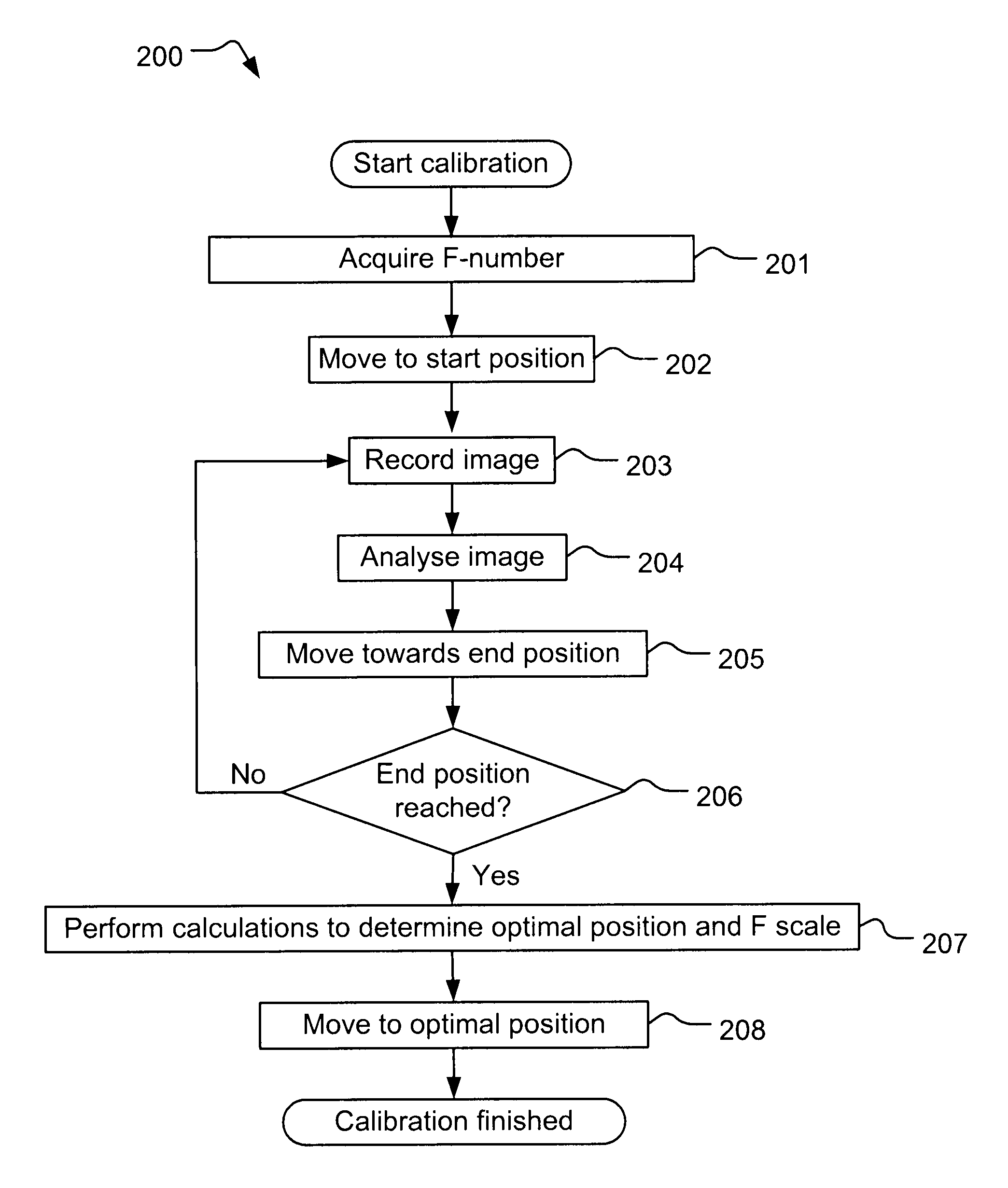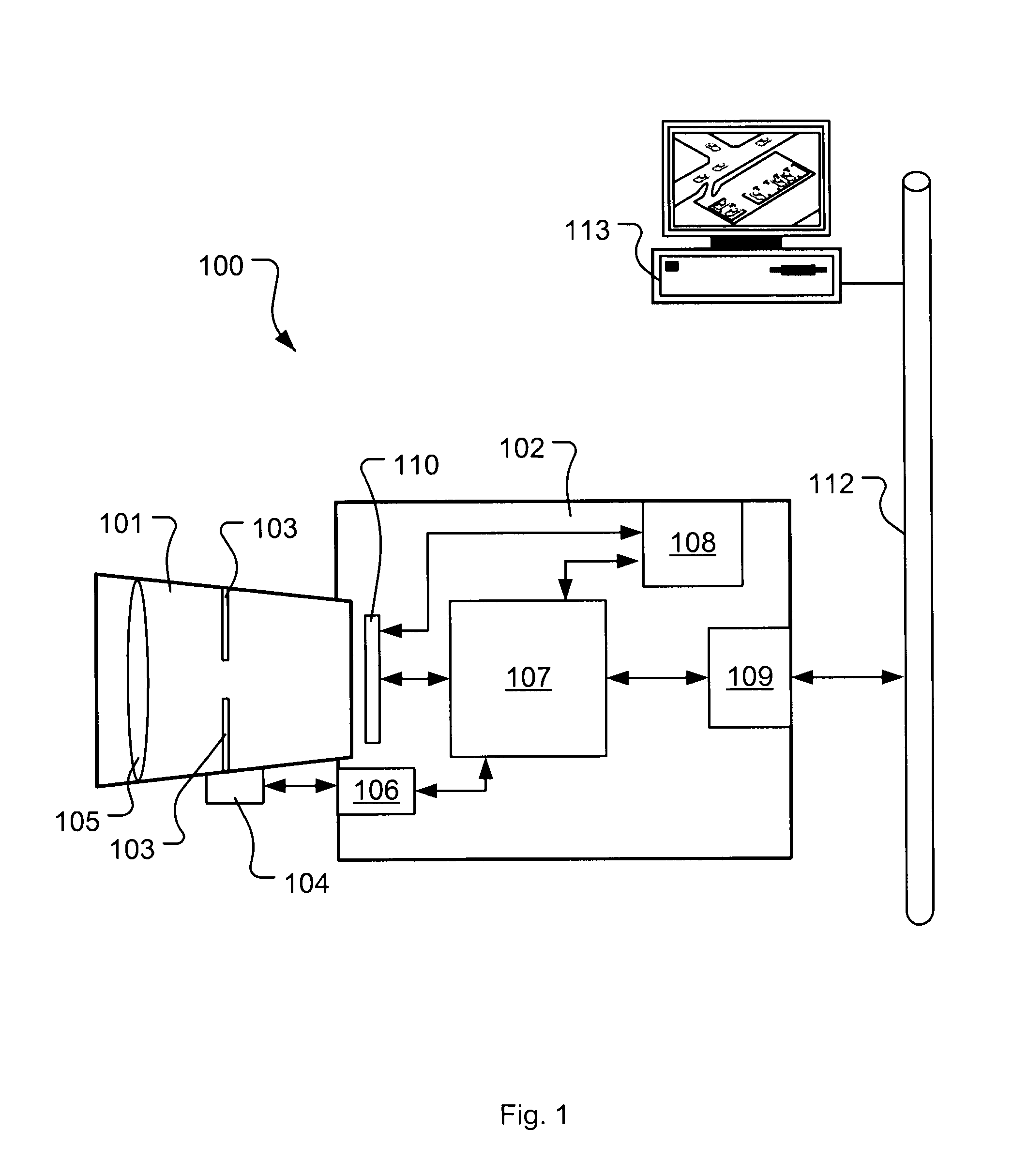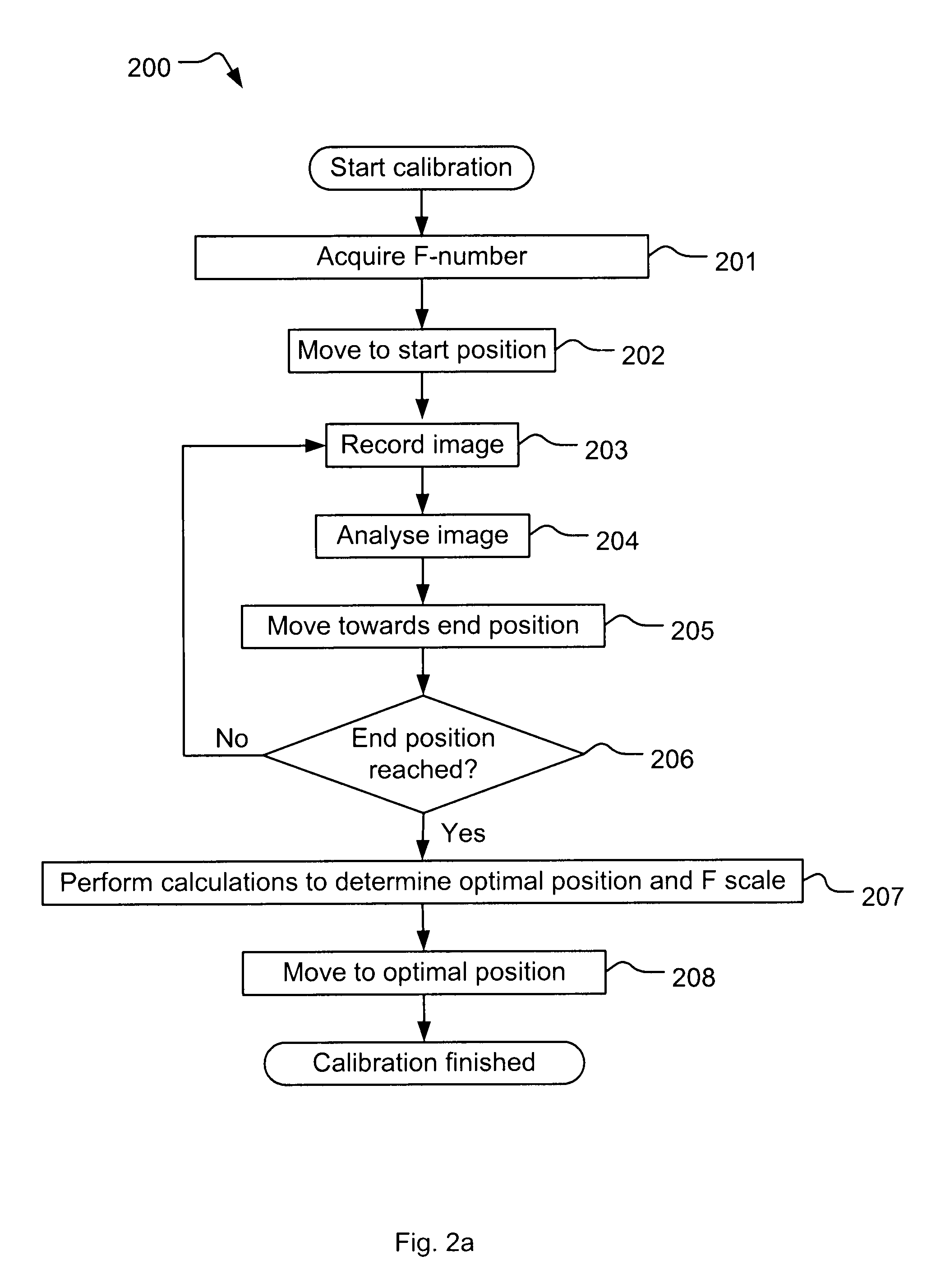Calibration of a lens device
a technology of lens and calibration, which is applied in the field of camera devices, can solve the problems of inability to develop a control algorithm for controlling the optical performance of the camera, inconvenient environment, and inability to use the camera or the user, so as to facilitate the procedure of making parameters, and reduce the effect of one or two
- Summary
- Abstract
- Description
- Claims
- Application Information
AI Technical Summary
Benefits of technology
Problems solved by technology
Method used
Image
Examples
first embodiment
[0071]In the present invention the high frequency content in a recorded image is determined by the processing means 107 using for instance a Sobel algorithm (i.e. discrete differentiation operator) and a Gaussian filter. The analysis of the high frequency content may result in a single value, from hereinafter referred to as a high frequency value (HF value), representing the amount of high frequency information that is present in a recorded image at the current position of the iris. The determined HF value may be stored in the memory 108. In a variant, a series of HF values are derived from a series of recorded images recorded at the same iris position. The series of HF values are then, for example, averaged into a single HF value. The averaging of a series of HF values will reduce the amount of noise and the negative effect of fast variations of the light in a scene, resulting in a more accurate HF value.
second embodiment
[0072]In a second embodiment the amount of light in an image may be determined. When arriving at a position the exposure algorithm will compensate for the light impinging on the image sensor 110 by adjusting the exposure time (i.e. integration time) and / or the gain of the image sensor 110. When the adjustment is done the value of the exposure time and the value of the gain of the image sensor 110 are stored in the memory 108. If multiple images have been recorded the average exposure time value and average gain value may be stored in the memory 108. In a variant the light intensity of the image is determined and stored in the memory 108. The light intensity of the current image may then be compared to the light intensity coming from at least one previously recorded image. The difference in light intensity between the two images may give information about if a stepping motor end position (closed or fully open) is reached or is close to be reached. It may also give information about i...
third embodiment
[0073]In a third embodiment the HF value and the values of the exposure time and the gain of the image sensor 110 is determined and stored in the memory 108. If multiple images have been recorded the respective averaged values may be stored in the memory 108.
[0074]In flowchart step 205 of the calibration the stepping motor is moved one or more steps towards an end position. In one embodiment the stepping motor moves one (or several) step in the direction of closing the iris opening by moving the diaphragm blades 103 of the P-Iris 101 closer to each other. In yet another embodiment the stepping motor moves one (or several) step in the direction of opening the iris opening by moving the diaphragm blades 103 of the P-Iris 101 further apart from each other.
[0075]In flowchart step 206 of the calibration it is determined if an end position is reached or not. If the end position is not reached the steps: ‘record image’203, ‘analyse image’204, and ‘move towards end position’205 is repeated ...
PUM
 Login to View More
Login to View More Abstract
Description
Claims
Application Information
 Login to View More
Login to View More - R&D
- Intellectual Property
- Life Sciences
- Materials
- Tech Scout
- Unparalleled Data Quality
- Higher Quality Content
- 60% Fewer Hallucinations
Browse by: Latest US Patents, China's latest patents, Technical Efficacy Thesaurus, Application Domain, Technology Topic, Popular Technical Reports.
© 2025 PatSnap. All rights reserved.Legal|Privacy policy|Modern Slavery Act Transparency Statement|Sitemap|About US| Contact US: help@patsnap.com



